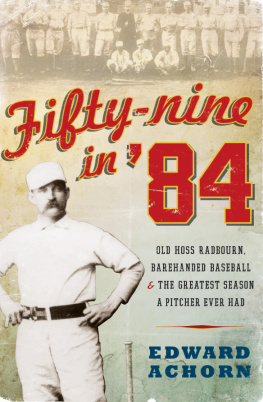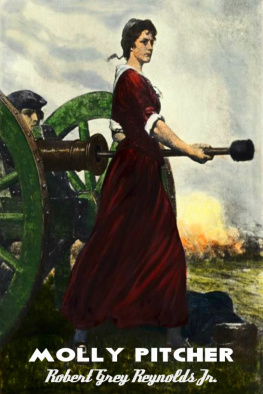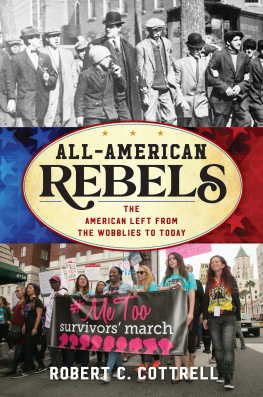Robert Charles Cottrell - The Best Pitcher in Baseball
Here you can read online Robert Charles Cottrell - The Best Pitcher in Baseball full text of the book (entire story) in english for free. Download pdf and epub, get meaning, cover and reviews about this ebook. year: 2001, publisher: New York University Press, genre: Detective and thriller. Description of the work, (preface) as well as reviews are available. Best literature library LitArk.com created for fans of good reading and offers a wide selection of genres:
Romance novel
Science fiction
Adventure
Detective
Science
History
Home and family
Prose
Art
Politics
Computer
Non-fiction
Religion
Business
Children
Humor
Choose a favorite category and find really read worthwhile books. Enjoy immersion in the world of imagination, feel the emotions of the characters or learn something new for yourself, make an fascinating discovery.

- Book:The Best Pitcher in Baseball
- Author:
- Publisher:New York University Press
- Genre:
- Year:2001
- Rating:4 / 5
- Favourites:Add to favourites
- Your mark:
- 80
- 1
- 2
- 3
- 4
- 5
The Best Pitcher in Baseball: summary, description and annotation
We offer to read an annotation, description, summary or preface (depends on what the author of the book "The Best Pitcher in Baseball" wrote himself). If you haven't found the necessary information about the book — write in the comments, we will try to find it.
The Best Pitcher in Baseball — read online for free the complete book (whole text) full work
Below is the text of the book, divided by pages. System saving the place of the last page read, allows you to conveniently read the book "The Best Pitcher in Baseball" online for free, without having to search again every time where you left off. Put a bookmark, and you can go to the page where you finished reading at any time.
Font size:
Interval:
Bookmark:
The Best Pitcher in Baseball
THE LIFE OF
RUBE FOSTER, NEGRO LEAGUE GIANT

Robert Charles Cottrell

To Jordan, a Rube Foster fan
NEW YORK UNIVERSITY PRESS
New York and London
Copyright 2001 by New York University
All rights reserved
Library of Congress Cataloging-in-Publication Data
Cottrell, Robert C., 1950
The best pitcher in baseball : the life of Rube Foster, Negro League giant/
Robert Charles Cottrell.
p. cm.
Includes bibliographical references (p.) and index.
ISBN 0-8147-1614-8 (cloth : alk. paper)
1. Foster, Rube, 18791930. 2. Baseball playersUnited States
Biography. 3. African American baseball playersUnited States
Biography. 4. Baseball team ownersUnited StatesBiography.
5. Negro leaguesHistory. I. Title.
GV865.F63 C68 2001
796.357092dc21 2001003175
New York University Press books are printed on acid-free paper,
and their binding materials are chosen for strength and durability.
Manufactured in the United States of America
10 9 8 7 6 5 4 3 2 1
ONE
The Best Pitcher in the Country
TWO
At the Top of His Game
THREE
A Return to the Midwest
FOUR
The Leland Giants
FIVE
The Chicago American Giants and the Making of a
Black Baseball Dynasty
SIX
Another Championship
SEVEN
The Dynasty Is Interrupted
EIGHT
Back on Top in Wartime
NINE
Rube Ball
TEN
Black Baseball and the Segregated Community
ELEVEN
Organizing Black Baseball
TWELVE
Czar of Black Baseball
THIRTEEN
Rube Fosters Legacy
FOURTEEN
The Drive to Cooperstown
In the midst of another writing project, I became increasingly enamored of Andrew Rube Foster, who has been termed both the father and the godfather of black baseball. To my amazement and somewhat perverse authors delight, I discovered that only one biography of Foster had been produced; moreover, as matters turned out, the scope of that lone book was quite limited. By contrast, any number of essays, articles, and book chapters on Foster were in print, including those by Robert Peterson and John Holway, who during the 1970s helped to rekindle interest in the blackened version of the national pastime.
In my journey to make sense of Fosters life and times, I devoured scores of books on baseball, the Negro Leagues, African Americans, and general United States history. I also delved into archives at the National Baseball Hall of Fame Library in Cooperstown, the Sporting News Archives in St. Louis, and the Chicago Historical Society. I am particularly appreciative of the many kindnesses and the professionalism displayed by Tim Wiles and his staff in Cooperstown, who enabled me to explore numerous Players, Officials, and Ashland Collection Files. I am similarly thankful for the assistance afforded by James R. Meier and Steven Gietschier at the Sporting News Archives. Once again, I am enormously grateful to George Thompson and Jo Ann Bradley of the Inter-library Loan Department at California State University, Chico. The folk at CSUC handled my countless requests for copies of various articles, books, and, above all else, microfilm rolls from a succession of black newspapers. Larry Lester of NoirTech Sports provided the photographic images contained in this book.
As I was completing the manuscript, my literary agent, Robbie Anna Hare of Goldfarb & Associates in Washington, D.C., began shopping it around. She and I had the good fortune to land a contract with New York University Press, where I have received enthusiastic support from Eric Zinner, Emily Park, and Niko Pfund.
One of the greatest pleasures in undertaking this project involved the fascination displayed by my now-eight-year-old daughter, Jordan, who herself was enthralled by the tale of Rube Foster. She was taken less by his baseball genius than by the travails he had to endure. Jordan never quite understood why Rube, notwithstanding extraordinary skills recognized by the likes of John McGraw and other baseball aficionados of the era, had to compete in a segregated game. Yes, she was well aware of the Jim Crow edifice that hemmed in black Americans; still, she didnt get it. Nor does her father, even though he has been teaching American history for more than two decades now.
Yet again, I have to convey my grateful thanks to Jordan and my wife, Sue, who endured my extensive research ventures and the long hours at the computer and on the couch, where I typically read, edit, and rewrite.
Rube Foster, it can readily be argued, was black baseballs greatest figure, although many claim that distinction for Jackie Robinson, who played but one season with the Kansas City Monarchs. Robinsons place in the annals of baseball and American history is, of course, secure. The minor league contract he signed with Branch Rickey in 1945 shattered the segregation barrier that had long soiled the national pastime. Then, as the first African American to perform in organized baseball in the twentieth century, Robinson starred as a member of the famed Boys of Summer; he helped to lead the Brooklyn Dodgers to six National League pennants, and, in 1955, to their first and only World Series championship. But as baseball historians have come to acknowledge, the story of Jackie Robinson and a procession of splendid African American major leaguers was possible only because of the earlier struggles and enduring accomplishments of Rube Foster and his black compatriots.
Foster was a true triple threat: he was black baseballs top pitcher during the first decade of the twentieth century, its finest manager, and its most creative administrator. But the 61 tall, 200-plus-pound Foster was still more: he was the man, more than any other individual, who all but single-handedly ensured black baseballs continuance in a period when it demanded all his legendary skill, acumen, and energy to remain in existence.
Striding out of Texas, where he was born in 1879, three years after the National League was established, Foster passed through Arkansas and the Upper Midwest before temporarily settling along the East Coast. Boasting a blazing fastball, an exceptional curve, a deadly screwball-like pitch, and impeccable control, Foster established a reputation as the finest ebony-skinned hurler in the land. He pitched for the games top black teams, the Cuban X-Giants and the Philadelphia Giants, steering them to consecutive colored championships from 1902 to 1906. His superb performances in the 1903 and 1904 series, along with a triumph over the Philadelphia Athletics Rube Waddell, led to the acquiring of a nickname and a nearly larger-than-life reputation.
The barrel-chested Foster, with an ever-expanding waistline, then headed for Chicago to serve as player-manager for the Leland Giants, considered to be the finest black baseball club in the Midwest. After vying with his former boss Frank C. Leland for the right to retain that name for his own ball club, Foster headed a squad that went 123-6 in 1910 before compiling a winning record in a series of exhibition contests in Cuba. Foster, with his strong Texas accent and calm, deep voice that invariably could be heard referring to someone as Darling, controlled virtually all his teams operations before he acquired a white partner, John C. Schorling, the son-in-law of Chicago White Sox owner Charles A. Comiskey. Their newly renamed ball club, the Chicago American Giants, attracted substantial crowds, occasionally outdrawing the citys major league squads.
Next pageFont size:
Interval:
Bookmark:
Similar books «The Best Pitcher in Baseball»
Look at similar books to The Best Pitcher in Baseball. We have selected literature similar in name and meaning in the hope of providing readers with more options to find new, interesting, not yet read works.
Discussion, reviews of the book The Best Pitcher in Baseball and just readers' own opinions. Leave your comments, write what you think about the work, its meaning or the main characters. Specify what exactly you liked and what you didn't like, and why you think so.








